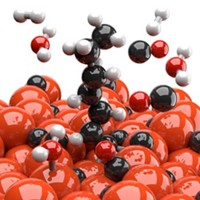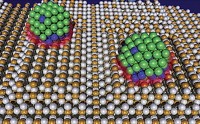Advertisement
Grab your lab coat. Let's get started
Welcome!
Welcome!
Create an account below to get 6 C&EN articles per month, receive newsletters and more - all free.
It seems this is your first time logging in online. Please enter the following information to continue.
As an ACS member you automatically get access to this site. All we need is few more details to create your reading experience.
Not you? Sign in with a different account.
Not you? Sign in with a different account.
ERROR 1
ERROR 1
ERROR 2
ERROR 2
ERROR 2
ERROR 2
ERROR 2
Password and Confirm password must match.
If you have an ACS member number, please enter it here so we can link this account to your membership. (optional)
ERROR 2
ACS values your privacy. By submitting your information, you are gaining access to C&EN and subscribing to our weekly newsletter. We use the information you provide to make your reading experience better, and we will never sell your data to third party members.
Materials
Nanosizing Improves Hydrogen Storage
May 19, 2008
| A version of this story appeared in
Volume 86, Issue 20
For hydrogen storage applications, materials composed of nanometer-sized particles outperform samples with larger particles in terms of energetics and hydrogen-release (desorption) temperature, according to researchers in the Netherlands (J. Am. Chem. Soc., DOI: 10.1021/ja710667v). The study may lead to new forms of materials that are well suited for use in hydrogen-powered automobiles. Slow hydrogen desorption kinetics and poor chemical reversibility limit the usefulness of widely studied hydrides, such as sodium alanate (NaAlH4), in hydrogen storage applications. Reducing particle size is one approach to improving those properties, but common methods lead to fairly large particles (150-nm diameters or larger) and broad size distributions. Cornelius P. Baldé, Krijn P. de Jong, and coworkers at Utrecht University developed wet synthesis methods that yield NaAlH4 particles measuring 1–10 μm, 19–30 nm, and 2 –10 nm. Tests show that the hydrogen-release temperature and activation energy decrease from 186 ºC and 116 kJ/mol for the larger particles to 70 ºC and 58 kJ/mol for the smaller particles. In addition, reducing particle size lowers the pressure needed for recharging the material with hydrogen, the team says.





Join the conversation
Contact the reporter
Submit a Letter to the Editor for publication
Engage with us on Twitter